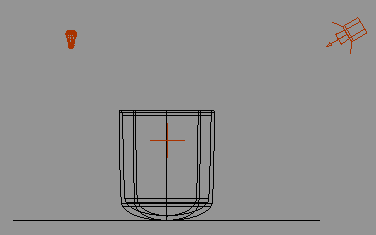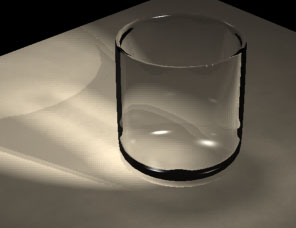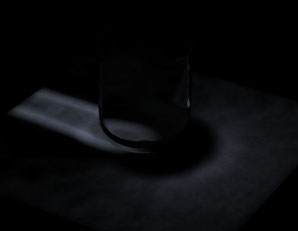3D Animation Workshop: Lesson 94: More Rendering Refinements
|
|
Lesson 94 - More Rendering Refinements - Part 3
Once I caught the basic flavor of caustics, I turned to a typical use of these tools. Specular highlights can be reflected (as we have been discovering), but they also can be transmitted through transparent surfaces. The classic example of caustics is the focused hotspot of light on a table produced by light passing through a glass vessel.
I built simple test scene by placing a round NURBS vessel on a surface. The vessel was assigned standard glass-like material parameters-including high transparency, high specularity and a high refractive value. A spot light passes through the vessel toward the table surface, and a second, low intensity point light adds some additional "fill" illumination.

I rendered first without the caustics. Mental Ray produces excellent shadow effects through transparent objects, and the result is not all that bad. Note the specular highlights on the glass.

But adding in the caustics for the spot light makes all the difference in the world. The refractive quality of the glass changes the shape of the specular highlights as they pass through the vessel and onto the table. Refraction occurs four times, as the light intersects the vessel's inner and outer surfaces . Note an overall increased brightness as the specular light reflects off the surface of the vessel, as well as passing though it.

To completely understand the caustic effects, Mental Ray permits you isolate them in a render. It's dark, to be sure, but it helps you see exactly how the previous image differs from the one before it.

Rendering is, perhaps, the closest thing to magic left in our world, and never fails to bring out the child in me. If creating these kind of images doesn't excite you, check your pulse.
| To Return to Parts 1 and 2, Use Arrow Buttons |
|
Created: June 6, 2000
Revised: June 6, 2000
URL: https://webreference.com/3d/lesson94/3.html


 Find a programming school near you
Find a programming school near you